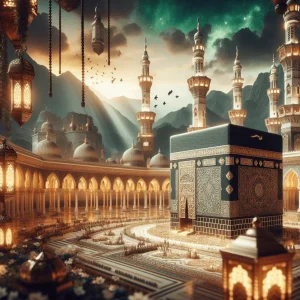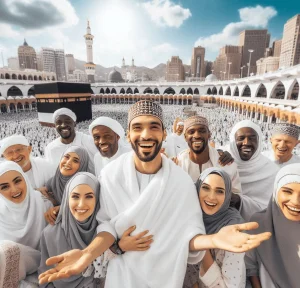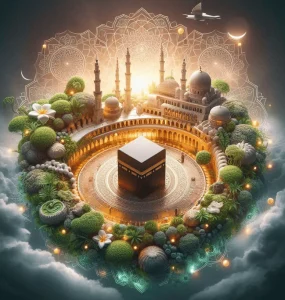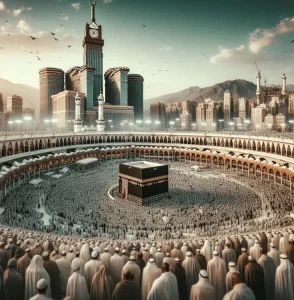Table of Contents
Nowruz in Islam As winter gives way to the vibrant blooms of spring, millions of people around the world celebrate Nowruz, a festival that heralds the Persian New Year and marks the vernal equinox. Nowruz, which means “new day” in Persian, is a time of renewal, hope, and joy. Though its roots are deeply entwined with ancient Zoroastrianism, Nowruz in Islam holds significant cultural and spiritual value, especially in regions where Persian influence has historically been strong. Let’s embark on a journey to understand how this ancient celebration intersects with Islamic traditions and values, enriching the lives of many Muslims.

The Origins and History of Nowruz
Nowruz in Islam dates back over 3,000 years, originating in the pre-Islamic era as a Zoroastrian festival celebrating the victory of light over darkness. It symbolizes the rejuvenation of nature and the renewal of life, coinciding with the spring equinox when day and night are equal in length. The historical legacy of Nowruz extends through various empires and civilizations, influencing diverse cultures across the Middle East, Central Asia, and beyond.
Nowruz in the Islamic World
The arrival of Islam in Persia and neighboring regions did not diminish the significance of Nowruz; rather, it adapted and thrived, blending seamlessly with Islamic customs. Many Islamic societies, particularly in Iran, Afghanistan, parts of the Caucasus, and Central Asia, celebrate Nowruz with great enthusiasm, viewing it as a time for spiritual and physical rejuvenation.
Nowruz and Islamic Teachings
The celebration of Nowruz in Islam is seen through the lens of cultural heritage rather than a religious obligation. However, many Muslims find the themes of renewal, gratitude, and charity inherent in Nowruz to be harmonious with Islamic values.
Renewal and Reflection
Nowruz embodies the concept of renewal, a theme that resonates with the Islamic practice of self-purification and reflection. The spring cleaning rituals, where homes are thoroughly cleaned and adorned with fresh decorations, parallel the Islamic tradition of purifying oneself before significant religious observances. This practice is reminiscent of preparing for Ramadan, another period of profound spiritual renewal in Islam.
Charity and Generosity
Generosity and helping those in need are integral aspects of both Nowruz and Islamic teachings. During Nowruz, it is customary to give alms to the poor, reflecting the Islamic principle of Zakat (charity), one of the Five Pillars of Islam. This act of giving fosters a sense of community and ensures that everyone can participate in the joyous festivities.
Nowruz Traditions and Celebrations
The celebration of Nowruz is marked by a variety of unique customs and rituals that vary across different regions. Let’s delve into some of the most cherished traditions associated with Nowruz and their significance in the Islamic cultural context.
Haft-Seen: The Table of Seven S’s
One of the most iconic traditions of Nowruz is the setting up of the Haft-Seen table, which features seven items, each starting with the Persian letter “S” (س). These items symbolize various aspects of life and nature, and often include:
- Sabzeh (sprouted wheat or lentils): Representing rebirth and growth.
- Samanu (sweet pudding made from wheat germ): Symbolizing power and strength.
- Senjed (dried oleaster berries): Signifying love and compassion.
- Seer (garlic): Representing health and medicine.
- Seeb (apple): Symbolizing beauty and good health.
- Somaq (sumac berries): Representing the sunrise and the victory of light over darkness.
- Serkeh (vinegar): Symbolizing patience and wisdom.
In addition to these items, the table may also feature a Quran, reflecting the integration of Islamic elements into the celebration, emphasizing the spiritual aspects of Nowruz in Islam.
Fire Jumps and Festive Lights
Chaharshanbe Suri, the festival of fire, takes place on the last Wednesday evening before Nowruz. People jump over bonfires, chanting phrases that mean “give me your beautiful red color and take back my sickly pallor,” symbolizing the wish to leave behind the old year’s troubles and embrace the new year with vitality and health. This tradition can be seen as a metaphor for spiritual cleansing, echoing the Islamic concept of seeking forgiveness and starting anew.
Family Gatherings and Festive Meals
Nowruz is a time for families to come together, sharing sumptuous meals and joyous moments. Traditional dishes vary by region but often include delicacies like Sabzi Polo Mahi (herbed rice with fish) and Reshteh Polo (rice with noodles), symbolizing the unraveling of life’s complexities. These gatherings foster familial bonds and community spirit, aligning with the Islamic emphasis on family and social harmony.
Visiting Graves and Remembering the Departed
An important aspect of Nowruz involves visiting the graves of loved ones, offering prayers, and remembering the deceased. This practice reflects the Islamic principle of honoring one’s ancestors and maintaining connections with family members who have passed away. It’s a time for introspection and appreciating the continuity of life.
Nowruz Around the Islamic World
While Nowruz is primarily associated with Persian culture, its celebration has spread to various regions with significant Muslim populations, each adding its own unique flavor to the festivities.
Iran: The Heart of Nowruz
In Iran, the celebration of Nowruz is a grand affair, marked by numerous public and private festivities. The Iranian New Year holiday lasts for about two weeks, starting from the vernal equinox. Iranians visit friends and family, exchange gifts, and partake in communal feasts, embodying the spirit of renewal and unity.
Afghanistan: A Rich Blend of Traditions
In Afghanistan, Nowruz is celebrated with particular zeal in cities like Mazar-i-Sharif, where the famous Red Mosque becomes a focal point for festivities. Afghan customs include special games like Buzkashi, a traditional horse-mounted game, and unique dishes such as Haft Mewa, a fruit salad made from seven different dried fruits.
Central Asia: Cultural Mosaic
Countries in Central Asia, including Uzbekistan, Tajikistan, and Kazakhstan, also celebrate Nowruz with vibrant cultural activities. These regions highlight their nomadic heritage through outdoor festivities, traditional music, and dance performances. The celebration is an amalgamation of Islamic values and ancient cultural practices, showcasing the region’s rich history.
Azerbaijan and the Caucasus: A Melting Pot of Celebrations
In Azerbaijan and other parts of the Caucasus, Nowruz is celebrated with fire rituals, traditional dances, and the preparation of national dishes like Plov. The festival emphasizes community gatherings and the importance of maintaining cultural heritage while embracing the principles of generosity and renewal found in Islam.
The Contemporary Relevance of Nowruz
In today’s fast-paced world, Nowruz offers a poignant reminder of the importance of reconnecting with nature, family, and oneself. Its themes of renewal and gratitude resonate deeply, providing an opportunity for spiritual reflection and communal solidarity.
Environmental Awareness
The celebration of Nowruz aligns with a growing global awareness of environmental issues. The festival’s emphasis on nature’s rebirth encourages practices that are environmentally friendly, such as planting trees and conserving natural resources. This connection to the natural world is harmonious with the Islamic teaching of being stewards of the earth.
Cultural Preservation
Nowruz in Islam serves as a powerful tool for preserving cultural heritage, especially in an era of globalization. It reinforces a sense of identity and continuity, helping Muslim communities maintain their unique cultural practices while integrating them with Islamic values.
Promoting Peace and Understanding
By celebrating Nowruz in Islam, Muslim communities promote values of peace, tolerance, and understanding. The inclusive nature of the festival, which transcends religious and cultural boundaries, fosters a spirit of unity and respect among diverse groups. This is particularly important in fostering interfaith and intercultural dialogue.
Nowruz in Islam
The celebration of Nowruz in Islam is a beautiful testament to the harmonious blending of ancient cultural traditions and Islamic values. This festival of renewal and hope enriches the lives of millions, offering a time for spiritual reflection, familial bonding, and communal joy. As we explore the vibrant customs and deep significance of Nowruz, we are reminded of the universal themes of rebirth, generosity, and unity that it embodies. Whether through the setting of the Haft-Seen table, the joyous family gatherings, or the acts of charity and remembrance, Nowruz continues to inspire and uplift, heralding a fresh beginning for all who partake in its celebrations.





More Stories
A Journey Through Islamic History: Must Visit Muslim Destinations
Journey of Faith: Finding Peace and Inspiration at Nabawi Mosque
Your Ultimate Retreat at Safa Tower Hotel Madinah